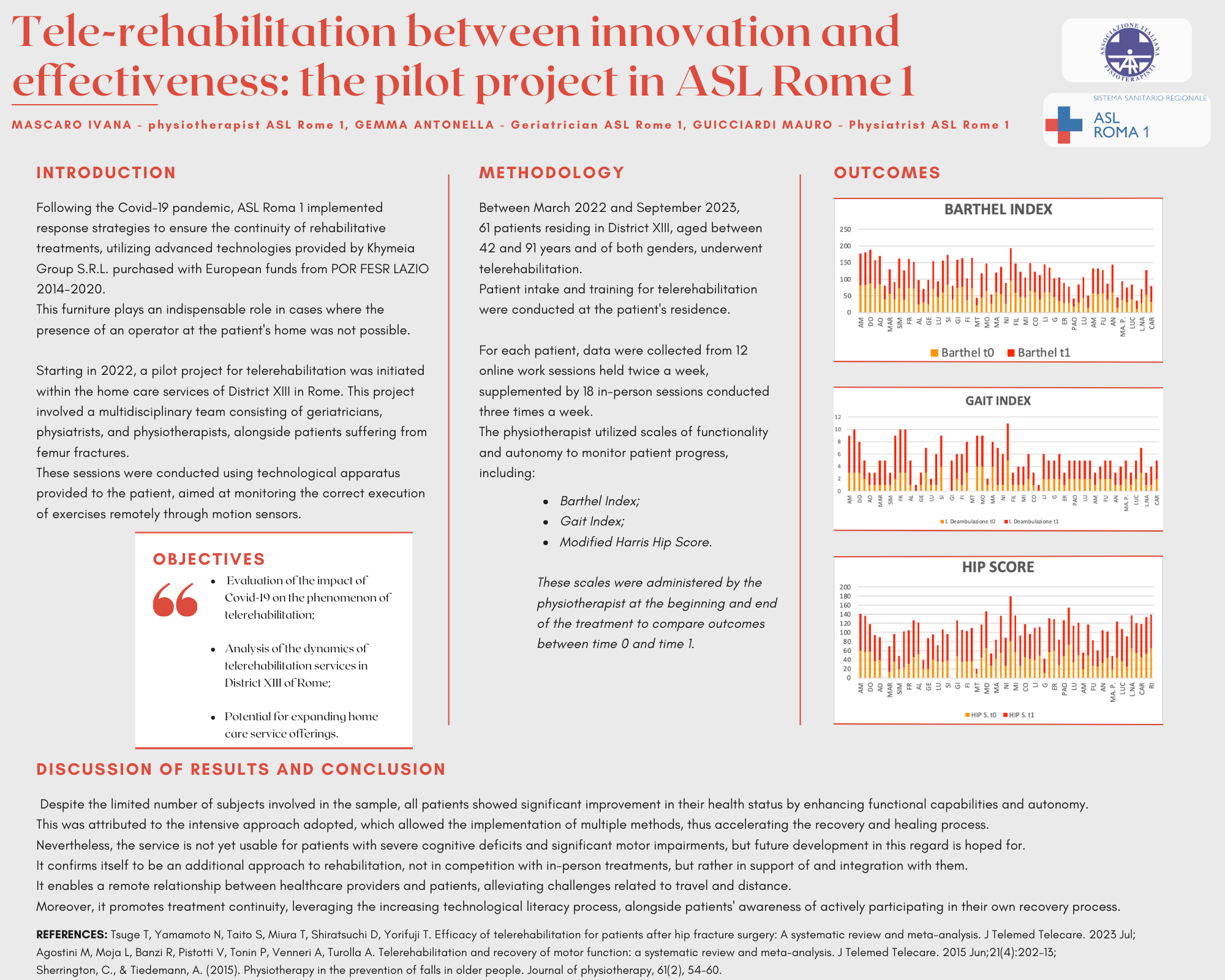Mascaro Ivana (ASL Roma 1, Roma, Italia)
Gemma Antonella (ASL Roma 1, Roma, Italia)
Guicciardi Mauro (ASL Roma 1, Roma, Italia)
Following the Covid-19 pandemic, ASL Roma 1 implemented response strategies to ensure the continuity of rehabilitative treatments, utilizing advanced technologies provided by Khymeia Group S.R.L. purchased with European funds from POR FESR LAZIO 2014-2020. This furniture plays an indispensable role in cases where the presence of an operator at the patient’s home was not possible. Starting in 2022, a pilot project for telerehabilitation was initiated within the home care services of District XIII in Rome. This project involved a multidisciplinary team consisting of geriatricians, physiatrists, and physiotherapists, alongside patients suffering from femur fractures. These sessions were conducted using technological apparatus provided to the patient, aimed at monitoring the correct execution of exercises remotely through motion sensors.
Between March 2022 and September 2023, 61 patients residing in District XIII, aged between 42 and 91 years and of both genders, underwent telerehabilitation. Patient intake and training for telerehabilitation were conducted at the patient’s residence. For each patient, data were collected from 12 online work sessions held twice a week, supplemented by 18 in-person sessions conducted three times a week. The physiotherapist utilized scales of functionality and autonomy to monitor patient’s progress, including: Barthel Index; Gait Index; Modified Harris Hip Score. These scales were administered by the physiotherapist at the beginning and end of the treatment to compare outcomes between time 0 and time 1.
Despite the limited number of subjects involved in the sample, all patients showed significant improvement in their health status by enhancing functional capabilities and autonomy. This was attributed to the intensive approach adopted, which allowed the implementation of multiple methods, thus accelerating the recovery and healing process. Nevertheless, the service is not yet usable for patients with severe cognitive deficits and significant motor impairments, but future development in this regard is hoped for.
It confirms itself to be an additional approach to rehabilitation, not in competition with in-person treatments, but rather in support of and integration with them. It enables a remote relationship between healthcare providers and patients, alleviating challenges related to travel and distance. Moreover, it promotes treatment continuity, leveraging the increasing technological literacy process, alongside patients’ awareness of actively participating in their own recovery process.
Tsuge T, Yamamoto N, Taito S, Miura T, Shiratsuchi D, Yorifuji T. Efficacy of telerehabilitation for patients after hip fracture surgery: A systematic review and meta-analysis. J Telemed Telecare. 2023 Jul;
Agostini M, Moja L, Banzi R, Pistotti V, Tonin P, Venneri A, Turolla A. Telerehabilitation and recovery of motor function: a systematic review and meta-analysis. J Telemed Telecare. 2015 Jun;21(4):202-13;
Sherrington, C., & Tiedemann, A. (2015). Physiotherapy in the prevention of falls in older people. Journal of physiotherapy, 61(2), 54-60.
